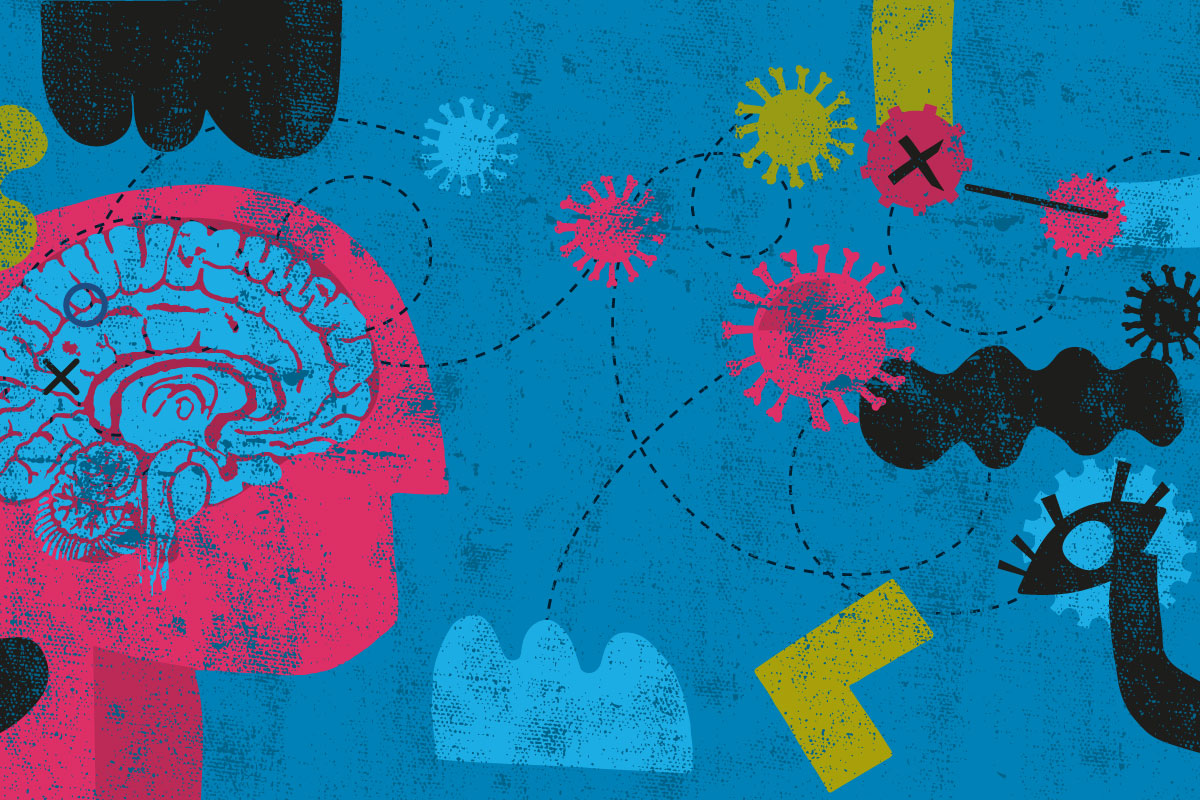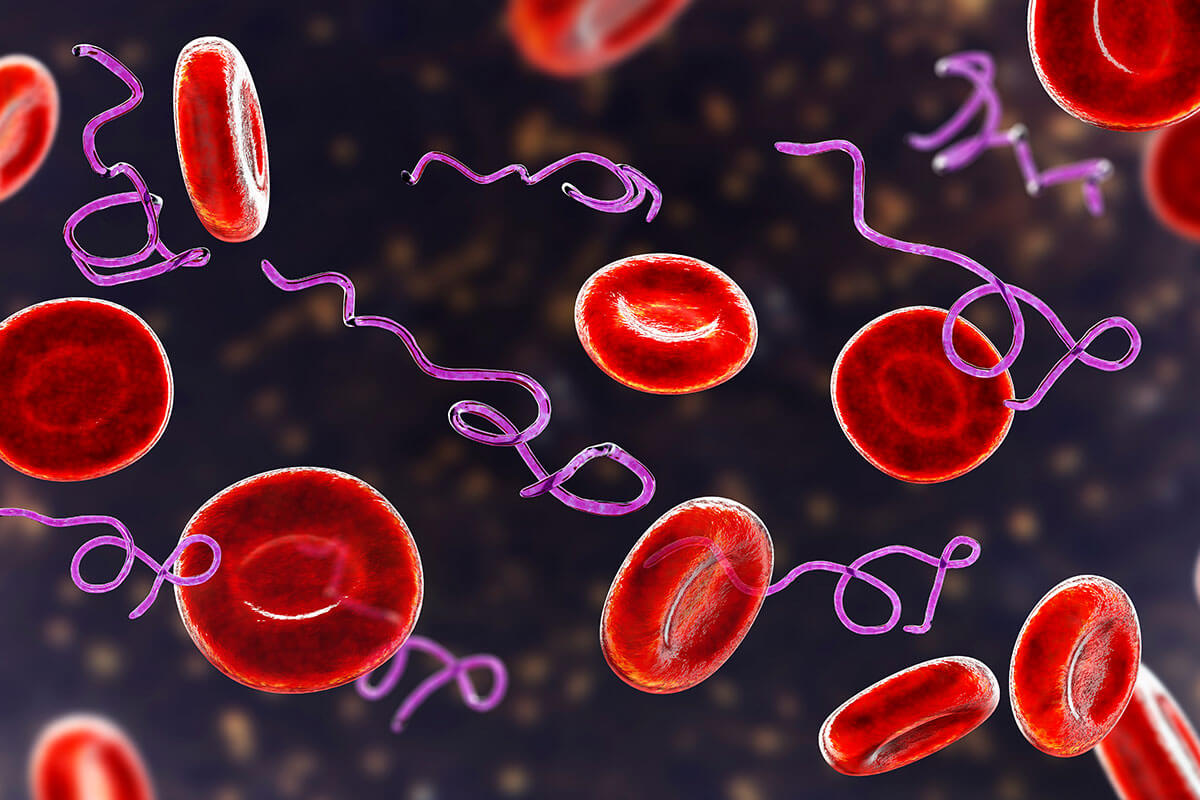Most people are unaware exposure to mold can cause serious illness. Even worse, most physicians are not familiar with mold illness or the symptoms of mold exposure, so it is rarely considered as a diagnosis. If mold is suspected, a physician may test the patient for mold allergies – or suggest they have allergies to some inhalant – but mold illness is much more. Symptoms of mold exposure are very similar to Lyme disease, and it is not uncommon for these conditions to occur simultaneously.

Someone can test positive for mold allergies and experience mold toxicity simultaneously. However, in mold toxicity, systemic immune dysregulation and subsequent inflammation are the underlying features that drive symptoms.
Sources of Mold Exposure
Extensive studies have estimated that about half of the homes in the United States have water damage and mold growth. The U.S. Environmental Protection Agency has surveyed 100 representative government and commercial office buildings and found that 45% had current leaks and 85% had evidence of past water damage.
Within 48 hours of dampness or water intrusion, pathogens begin to grow. All that is needed for mold growth is dampness and any plant-based material such as wood, paper, wallpaper, drywall, ceiling tiles, dust, and more. Mold growth will continue if there is moisture, which could be why some people’s symptoms worsen during the winter and spring. For mold remediation to be successful, it is critical to find the source of water or dampness and accurately correct the leak.
Mold produces toxins called mycotoxins. Mycotoxins can spread throughout the house like smoke does when something is burning on the stove.
Increased Risk for Mold Growth
Buildings with flat roofs or basements or that are built on hillsides or in shaded areas are at increased risk for mold growth. HVAC systems are also a significant source of mold growth, especially when ducting is in a basement. In addition, water damage can come from a leaking roof, pipe, or appliance, such as a dishwasher, refrigerator, or washing machine. Poorly maintained buildings are much more susceptible to mold growth. Government buildings, schools, rental apartments, and homes are poorly maintained.
There are also circumstances when water damage to a home or building is apparent. A patient shared a story of a wall caving in under the pressure of a paint roller because the sheetrock was so damp from water damage. Others have reported discovering mold growing on a wall after removing a bed or a picture (mold grows where there is no light). I have seen patients who were exposed to mold in their cars and at their place of work.
Current and past mold exposure can cause illness. People can continue to have elevated mycotoxins from past mold exposure long after leaving a moldy environment.
However, most of the time, my patients are unaware they have been exposed to mold until they get tested. Once diagnosed with mold illness, people may recall a house they lived in years before their health declined had a musty odor. How about the dorm the college student lived in, where the air conditioning unit was always on? When did their health decline?
Is All Mold Toxic?
Mold is not the only pathogen that grows from water damage. Fungal fragments, spores, mycotoxins, bacteria, mycobacteria, actinomycetes, VOCs, and other biotoxins can also form in damp buildings. These pathogens combine to produce a toxic soup that can lead to a multi-systemic and multi-symptomatic illness.
Not all mold is toxic, but many mold species from water-damaged buildings produce mycotoxins. It is the indoor concentration of mycotoxins – and the rest of the toxic soup – that can contribute to chronic debilitating symptoms.
Mold Toxicity and Lyme Disease
Mold illness causes many of the same symptoms as Lyme disease. Both trigger systemic inflammation and immune dysregulation, leading to symptoms such as fatigue, brain fog, headaches, joint pain, and anxiety.
When tick-borne infections and mold toxicity occur together, the mold illness must be addressed before the tick-borne infection(s) can be treated successfully. Mycotoxins suppress the immune system making it difficult to treat Lyme disease and co-infections effectively.
Symptoms of Mold Exposure
The symptoms of mold exposure are due to chronic inflammation and oxidative damage that adversely affects the structure and function of various organs and tissues in the body.
The symptoms of mold illness are:
- Psychiatric – anxiety, fear, panic attacks, mood swings, irritability, anger, OCD, reduced ability to cope with stress, hallucinations, and suicidal thoughts
- Cognitive – decreased short-term memory, difficulty concentrating, difficulty learning new information, word-finding difficulty, reduced ability to plan and execute, lack of motivation, brain fog, and Alzheimer’s dementia
- Musculoskeletal – muscle aches, sharp shooting pain, joint pain, morning stiffness
- Cardiovascular – palpitations, vasculitis, edema
- Fatigue and chronic fatigue syndrome
- Respiratory – shortness of breath, chronic cough, sinus congestion, nasal drip
- Neurological – headaches, migraines, tremors, vertigo, seizures, burning along the spine, sensitivity to light, sensitivity to touch, numbness and tingling, sense of internal vibration
- Digestive – abdominal pain, diarrhea, appetite swings, nausea, leaky gut syndrome
- Eye tearing and itching
- Multiple chemical sensitivity (MCS) and EMF sensitivity
- Mast Cell Activation Syndrome (MCAS)
People with mold illness are commonly misdiagnosed with chronic fatigue syndrome, rheumatoid arthritis, fibromyalgia, Alzheimer’s dementia, and respiratory disorders like asthma. Given the broad range of the symptoms of mold exposure, you can see why many physicians miss this diagnosis unless they have had specialty training in mold illness.
Proper Testing for Mold Illness
Physicians specializing in mold illness have narrowed in on tests most effective in determining if mold is an underlying cause of someone’s symptoms. Before considering laboratory tests, there is often a clinical suspicion someone may suffer from mold exposure symptoms.
When someone is experiencing any of the above symptoms – and no other diagnosis has been made that explains these symptoms – mold illness should be considered. There is also the circumstance when someone has another diagnosis, such as Lyme disease, but treatments have not been effective in resolving symptoms.
Urine Mycotoxin Test
A urine mycotoxin test indicates whether or not a person is excreting mycotoxins from mold exposure. However, our bodies should excrete mycotoxins after exposure to mold and this does not necessarily mean someone has mold illness. The degree of elevation of mycotoxins in the urine suggests the severity of mold toxicity.
The urine mycotoxin test I prefer is Real Time Laboratory. To increase the accuracy of urine testing, intravenous glutathione should be received the day before collecting the urine sample. If you do not have access to intravenous glutathione, oral liposomal glutathione for five days before collection is sufficient. Binders such as charcoal and clay need to be discontinued for five days before collection.
Effective Treatment for Symptoms of Mold Exposure
Get Your Home Tested Properly
Proper mold inspection requires hiring an experienced Indoor Environmental Professional (IEP) who uses various testing techniques to ensure there has not been water damage leading to mold growth in your home. When someone is sick in the household, the degree of mold testing needs to be more comprehensive than if someone was doing a general home inspection. I have witnessed mold inspectors miss water damage and mold growth in patients’ homes because they did not thoroughly investigate or used the wrong testing methods.
Proper mold testing helps establish the scope of work (SOW) for remediation. It is a conflict of interest to hire an inspector who does remediation. However, most reputable inspectors can recommend a contractor who specializes in mold remediation.
The International Society for Environmentally Acquired Illness (ISEAI) has a database of IEPs with expertise in mold inspection. If you do not find an IEP near you on the ISEAI database, visit www.acac.org and look for CIEC and CMC certifications. You will also find certified remediators with CMRS and CMR designations.
Treatments for Mold Illness
Prescription medications and supplements – known as binders – are used to reduce the mycotoxin burden in the body. Technically, these compounds do not bind mycotoxins but adsorb like static cling. Mycotoxins are secreted with bile from the gallbladder into the intestines. Mycotoxins adhere to binders in the intestines and are then excreted through the stool.
Symptoms can flare when a binder mobilizes mycotoxins. Support detoxification pathways and reduce inflammation to minimize this reaction. Natural binders, such as charcoal and clay, are effective at reducing mycotoxin levels, and prescription binders are rarely needed. Binder formulas work best, and MycoBind is what my patients have had the best success with.
To treat mold toxicity, all the binders listed here must be taken on an empty stomach at least an hour before or 2 hours after meals, and other supplements and medications. Extended-release medications – especially mood-stabilizing medications – require extra time.
Binders must be taken at least twice daily (once someone can tolerate that frequency). When taken at least twice daily, binders reduce the mycotoxin burden in tissues more effectively. Finding time to take binders on an empty stomach can be challenging, especially when taking other supplements and medications. Binders can also be taken in the middle of the night.
Glutathione in Treating Mold Toxicity
Glutathione is a compound produced by our body and is a powerful antioxidant that supports immune system function and promotes detoxification. Mold exposure depletes glutathione levels and is one of the most effective compounds in removing mycotoxins.
Some people have genetic variations in glutathione genes that interfere with glutathione production. These people tend to feel worse around toxicant exposures, which may play a role in why some people feel sick when exposed to mold and others do not.
Glutathione can be administered intravenously or orally. If taken orally, it is essential to use a liposomal glutathione. A typical oral dose of liposomal glutathione is 450mg one to two times per day.
Reduce Inflammation in Mold Toxicity
Exposure to mold triggers chronic inflammation and oxidative damage in the body. In addition to removing mycotoxins with binders and through detoxification, the other critical steps are repairing the inflammatory response and oxidative damage.
Some therapies have been shown to reduce the inflammatory cytokines that increase in the presence of mycotoxins. Below are some treatments that have proven to be effective in my practice or have demonstrated success in research studies.
- Turmeric
- Berberine
- Resveratrol
- NAC
- Low-dose naltrexone (LDN)
- Phosphatidyl choline
- Green tea (EGCG)
- Transfer Factors Enviro
Don’t Let Mold Interfere with Restoring Your Health
Mold is everywhere in the environment. Indoor exposure to toxic mold can trigger inflammation and cause immune dysregulation that causes multiple symptoms in multiple systems of the body. This makes mold illness challenging to diagnose. Physicians rarely look for environmental causes of disease, so they do not ask patients about exposure to such things as mold. If you are suffering from multiple chronic symptoms or have been diagnosed with Lyme disease or an autoimmune or neurological condition without a known cause, find a physician with expertise in mold illness so you can get properly tested.



